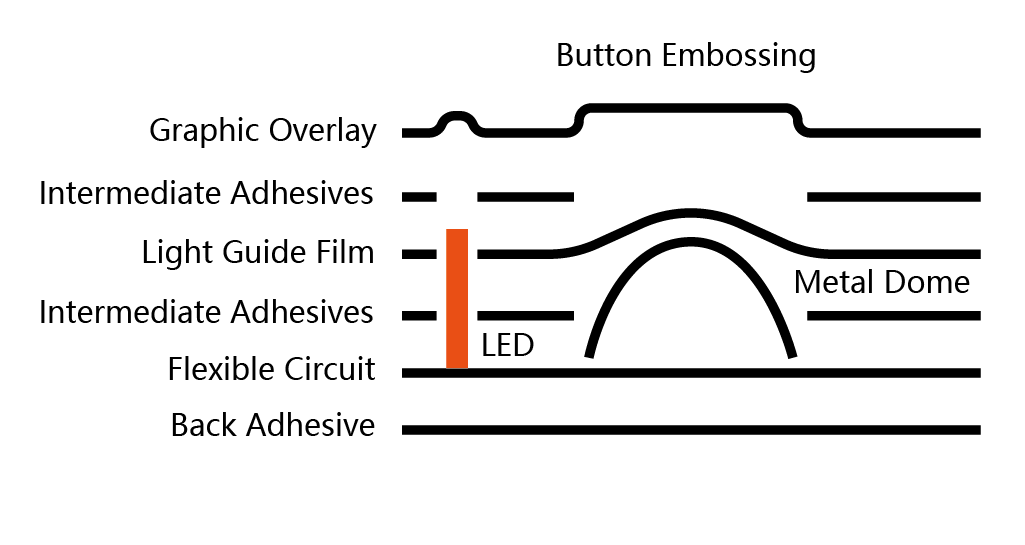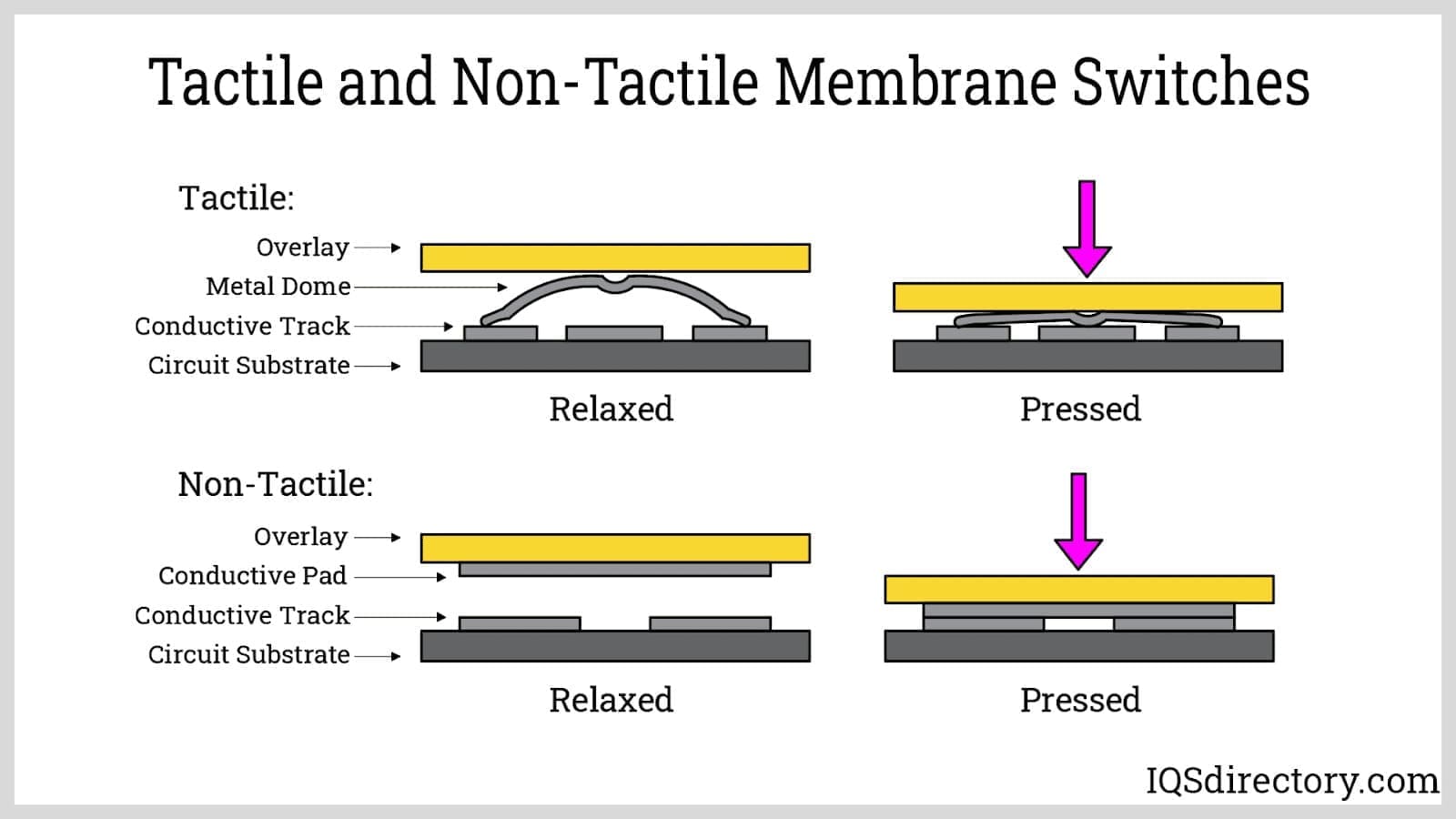Understanding the Significance of Membrane Layer Switch Over in Modern Electronic Devices
Membrane layer buttons are important elements in modern electronic tools. They use a mix of performance and design that boosts customer interaction. Their lightweight and durable nature makes them appropriate for various applications. As sectors progress, the demand for customization and progressed functions grows. Recognizing exactly how membrane switches over add to innovation discloses their importance in forming the future of electronics. What exists ahead for this technology?
The Essentials of Membrane Switch Innovation
Frequently forgotten, membrane layer switch modern technology plays a necessary role in the modern-day electronics landscape. These gadgets, made up of multiple layers, work as individual interfaces for various digital items, ranging from house appliances to clinical tools. A common membrane layer button contains a visuals overlay, a spacer layer, and a circuit layer, which are meticulously set up to develop a practical interface.When stress is applied to the overlay, the circuit layer is completed, enabling signals to be sent to the device. This innovation is understood for its versatility, allowing modification in performance, layout, and shape to satisfy details user requirements. Furthermore, membrane layer buttons are light-weight and slim, making them ideal for applications where room is a premium. Their toughness and resistance to ecological variables further enhance their charm, ensuring they can endure rough conditions while preserving performance. On the whole, membrane switch modern technology is essential to producing user-friendly and efficient electronic devices

Secret Advantages of Membrane Layer Changes
Membrane switches deal a number of essential benefits that make them a recommended option in various digital applications. Their style enables for a compact kind factor, allowing manufacturers to produce light-weight and smooth tools. Furthermore, membrane layer buttons are resistant to dirt, wetness, and chemicals, which enhances their durability and long life sought after environments. The responsive comments supplied by these buttons can boost individual experience, making them instinctive and easy to operate.Furthermore, membrane layer buttons can be personalized with diverse graphics and colors, permitting distinct branding possibilities. The manufacturing procedure is generally economical, especially for high-volume manufacturing, as it decreases setting up time and streamlines design. Ultimately, membrane changes call for minimal maintenance, adding to reduced overall operational expenses. These advantages underscore their growing appeal in modern-day electronics, where dependability and user-friendly interfaces are vital.

Applications Across Numerous Industries
The convenience of membrane layer switches allows their extensive adoption throughout different industries. In the clinical field, they are commonly used in diagnostic equipment and individual tracking systems, offering a sturdy interface immune to pollutants. The automotive market utilizes membrane layer buttons for control panel controls, improving customer experience with sleek layouts that endure harsh conditions. In customer electronic devices, they act as control panels for tools such as microwaves and coffee makers, supplying an user-friendly interface that is simple to tidy. The aerospace industry uses membrane switches in cockpit controls, where dependability and room effectiveness are paramount. In addition, the industrial industry leverages these switches in equipment and control systems to ensure robust procedure in demanding environments. This wide variety of applications underscores the flexibility of membrane buttons, making them essential parts in enhancing performance and customer interaction across diverse technical landscapes.
Customization and Design Adaptability

Future Fads in Membrane Layer Switch Over Development
Arising trends in membrane layer switch growth show an expanding focus on improved performance and combination with wise innovations. As consumer demand for extra advanced electronic devices boosts, suppliers are concentrating on creating membrane switches that not just offer basic functional duties yet likewise integrate features like touch level of sensitivity, backlighting, and haptic feedback.Furthermore, developments in materials are anticipated to enhance resilience and environmental resistance, making membrane layer changes appropriate for diverse applications in sectors such as health care, automobile, and consumer electronic devices. The assimilation of capacitive touch innovation is likely to become extra common, enabling sleeker layouts and enhanced user interfaces. membrane switch.Additionally, the surge of the Web of Things (IoT) is motivating the development of membrane layer changes that can communicate wirelessly with various other devices, boosting interconnectivity. Generally, the future of membrane button technology shows up appealing, driven by development and the search of user-friendly remedies
Often Asked Questions
Just How Do Membrane Switches Contrast to Conventional Mechanical Switches?
Membrane layer switches, being more space-efficient and offering a streamlined layout, comparison with traditional mechanical buttons that provide tactile feedback. The previous commonly include adjustable graphics, while the last generally assure sturdiness and integrity in numerous applications.
What Products Are Generally Made Use Of in Membrane Switch Production?
Membrane layer switches are commonly generated using materials such as polyester, polycarbonate, and published conductive inks. These products provide adaptability, responsiveness, and resilience, making them appropriate for different applications in electronic gadgets and interface.
Can Membrane Changes Be Fixed or Reused?
Membrane layer buttons can commonly be fixed, specifically if small problems develop, such as sticky failure or surface damages. Nevertheless, total reuse is usually limited due to put on and prospective deterioration of materials with time.
Just How Do Environmental Factors Influence Membrane Switch Over Efficiency?
Ecological aspects, such as direct exposure, humidity, and temperature level to chemicals, considerably affect membrane button performance. Extreme problems can result in deterioration, affecting responsiveness and long life, ultimately jeopardizing the functionality of the tool in various applications.
What Is the Regular Lifespan of a Membrane Layer Switch?
The normal lifespan of a membrane button generally varies from 1 to 5 million actuations, relying on elements such as use regularity, environmental problems, and the products used in manufacturing, influencing sturdiness and efficiency longevity. A common membrane layer button consists of a graphic overlay, a spacer layer, and a circuit layer, which are thoroughly constructed to create click this link a functional interface - membrane switch.When stress is used to the overlay, the circuit layer is completed, allowing signals to be transferred to the gadget. The responsive responses offered by these buttons can enhance individual experience, making them easy and intuitive to operate.Furthermore, membrane layer switches can be tailored with diverse graphics and colors, enabling for special branding chances. As consumer need for more advanced electronic tools increases, makers are concentrating on developing membrane layer switches over that not just offer fundamental functional functions however likewise integrate features like touch level of sensitivity, backlighting, and haptic feedback.Furthermore, advancements in materials are expected to improve resilience and environmental resistance, making membrane changes appropriate for diverse applications in industries such as healthcare, automobile, and consumer electronics. The integration of capacitive touch modern technology is likely to become extra widespread, enabling for sleeker styles and improved customer interfaces.Additionally, the surge of the Web of Things (IoT) is prompting the growth of membrane layer switches that can communicate wirelessly with various other gadgets, enhancing interconnectivity. Membrane layer buttons, being much more space-efficient and offering a streamlined style, contrast with typical mechanical buttons that offer responsive comments